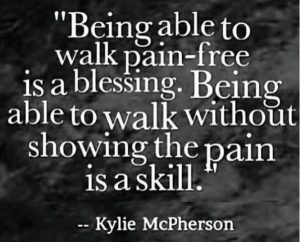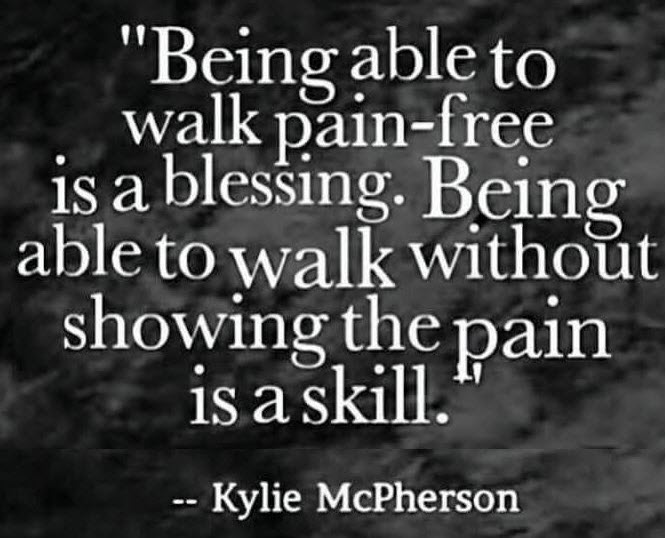Why Do We Remember Suffering Forever?
Why Do We Remember Suffering Forever?
 Last week, I wrote about what I say to a jury to introduce them to the concept of placing a value on pain and suffering. I discussed how a dollar “value” was once placed on individual slaves, and how property that has been damaged is valued. I provided examples of how we value a damaged washer and dryer, a damaged vehicle, an injured racehorse, and a partially burned famous painting.
Last week, I wrote about what I say to a jury to introduce them to the concept of placing a value on pain and suffering. I discussed how a dollar “value” was once placed on individual slaves, and how property that has been damaged is valued. I provided examples of how we value a damaged washer and dryer, a damaged vehicle, an injured racehorse, and a partially burned famous painting.
I ended by asking, “What happens when my body is damaged to such an extent that I am in pain all the time? What is that pain worth? And what if in addition to the pain that I’m having, I’m suffering? What is the suffering worth?”
As a general rule, jurors feel uncomfortable about awarding money for pain and suffering. For some, there are Christian principles they were taught that cause them to frown upon people who go to court to obtain money for an injury. For others, there are beliefs that find fault with going to court to obtain money for an injury. These principles and beliefs usually soften and change when a person or someone who the person loves is permanently injured because of another person’s negligence.
I specifically address these issues in my closing argument because it would be very risky for me to allow a jury to deliberate on the value of my client’s case without walking them through the reasons why our system of justice is the only fair and rational way to deal with a situation in which a person has been permanently injured as a result of another person’s negligence.
Before I move on to the topic of pain and suffering, I want to emphasize that everything I say to a jury in a closing argument must be backed up and supported by what the jury heard and learned from the witnesses and the documents that were introduced into evidence. It is rare that a jury of 12 people can be fooled. Their collective knowledge, skills, experiences, and memories of the evidence that was presented in the case usually lead them to collectively make the correct decision in a case.
With regard to the issue of pain and suffering, I have an analogy that I use in my closing arguments to help put my client’s pain and suffering into perspective for the jury. It goes something like this:
Sometimes I wish we had a device — maybe someday we will — that has two handles on one side and two handles on the other side. The device would be used to transfer pain from one person to another. My client, Jane, could walk up to the device and hold the handles and I could walk over and hold the handles on the other side. The device would have the ability to transfer Jane’s pain from her to me, so I could feel what she was experiencing.
If we had such a device, we could bring it into court and have each person in the courtroom grab the handles on one side while Jane held the handles on the other side. Then each of us could experience the pain she is going through, rather than being forced to rely on her testimony and the testimony of her husband and the other witnesses in the case.
What we’re talking about here is chronic physical pain. We ordinarily forget about physical pain after it goes away. In high school, I was in wrestling, and we had this great coach who was just brutal. He’d make us do sit-ups and leg raises for long periods of time and the guys would be on the floor cussing at him because it hurt so much. He’d yell, “It’s only pain. It’ll go away in five minutes. It’s only pain. It’ll go away.”
Ultimately, he was trying to get us in great condition. And he was right. The pain always went away. Ordinary physical pain that is not chronic in nature eventually goes away. If physical pain didn’t go away, then a lot of women wouldn’t have a second baby. Usually, a couple of years after going through their first childbirth, when they remember the joy and emotions attached to having a new baby, they want a second baby. If they had a clear, fresh memory of the actual physical pain they went through with their first baby, or if they were still experiencing pain from the birth of their first child, many of them would probably avoid another pregnancy.
In college, I knew guys who would go out drinking every Friday night. They would get drunk and the next morning they would have a hangover and would be vomiting. “I’ll never drink again,” they would say. A week later, they would be out drinking again. The pain from the week before went away, and they forgot about it.
When I’m sick, I just want to die. But guess what? When I’m better a week later, I forgot about the pain I went through.
But what happens when pain doesn’t go away?
The pain of childbirth ordinarily goes away. It disappears over time. The pain of a hangover goes away. The pain of my sickness goes away.
But what happens when the pain doesn’t go away?
What happens when you wake up every morning with pain that is so severe that you can’t stand it? What happens when it doesn’t go away during the day? What happens when you go shopping at Walmart and you hurt so bad that you can’t stand it? Or you ride in the car for too long, and it’s unbearable? Or you want to go on vacation with your husband like you used to, but you can’t because you know you’ll be miserable, which will make your husband miserable? Or how about when you want to be intimate with your husband?
What happens if the pain never goes away?
That’s what we need to consider when we talk about what Jane is going through and what she will experience in the future.
Now, we’ve been talking about physical pain, but what about suffering?
Suffering is different from physical pain. Suffering is the experience of emotional pain.
Unlike physical pain, you don’t forget suffering.
I sometimes wish that it were the other way around. It would probably be better if we remembered some of our past physical pain. If we remembered the hangover, we wouldn’t drink again. If we remembered being sick, we would be more careful about taking care of ourselves.
But while we ordinarily forget physical pain, we remember suffering forever. The mother who loses a child never forgets the suffering she went through. When someone humiliates you, you never forget the emotional suffering you experienced when you were humiliated. The betrayal of a friend or a spouse? That’s suffering that is never forgotten.
The law allows an injured person to recover compensation for both pain and suffering. If we could put everything back the way it was, everyone could keep their money. But unfortunately, the only way we have to help make things right is by compensating Jane for her pain and suffering.
Any decent person, including Jane, will tell you, “I don’t want the money. Just give me my life back.”
But we can’t give Jane her life back. That’s why we’re here. (I then list all the examples of pain and suffering that Jane has been going through and will continue to go through for the rest of her life.)
There is one more theme that I present before I give the jury a breakdown of what I believe they should award my client. I’ll discuss that particular theme next week.





3 Comments
[…] is pain? What is the difference between pain and suffering? More on this topic next week. Print this […]
This is interesting – I’ll look for the continuation. Thank you, Harry and Georgette, with loving prayers. Sister Roberta
[…] Here’s an example of what I ordinarily say to a jury when I have a client who is experiencing chronic pain and suffering: […]